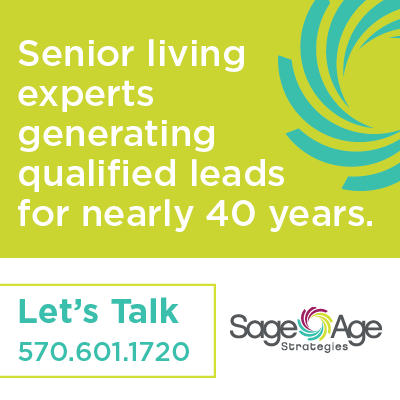By Jack Cumming
Jeannee Parker Martin, and her team of colleagues, put together a warm welcome for attendees at the LeadingAge California Annual Conference. The theme was BOLD, a timely message for an industry just emerging from the pandemic into a world of change.
Frankly, I was pleasantly surprised myself at the warm welcome I, too, experienced. I am a resident who advocates for greater respect for residents as full partners in their homes. That has not always been a welcoming presence, but the times are changing. Resident expectations are changing. And so are provider attitudes toward BOLD residents.
The Frailer Resident
Truth to tell, not many residents attend the event. I was fortunate some years ago to serve on the LeadingAge California Board in the resident category. It gave me valuable insight into the provider mindset. I’ve also seen that mindset slowly shifting more and more, though much more slowly than suits my visioning, toward empowerment and respect for residents. During the fifteen years of my residency, I’ve also seen a trend toward older, frailer residents, and that shift was evident in the healthcare chatter at the Conference.
One unspoken takeaway from the conference is that the Department of Social Services (DSS), a primary regulatory body for California senior services (along with the Department of Health) does not fully grasp the positives of independent congregate living within the care capabilities of a CCRC, aka Life Plan Community. In California, all CCRCs are required to be licensed as assisted living, called Residential Care Facilities for the Elderly in the state.
Some providers use this “requirement” to respond to residents’ desires to “age in place” in their otherwise independent living residence. This means that as COVID-19 becomes less intense, and masks become optional elsewhere, they are still mandated for the healthy independent living residents in CCRCs. That leaves open the question of whether the government is part of the solution or part of the problem.
Most likely, though, it simply means that the DSS staff don’t fully grasp the stages of senior living. The result can be self-fulfilling. Government regulations make senior living more restrictive. The intent, to protect the frailest and most vulnerable residents, is positive. Still, prospective independent residents are wise to continue with the freedoms and social engagement of the outside world until they are able to once more live fully within a California CCRC.
Innovative Breakout Sessions
LeadingAge California is very open to emerging technologies, and the Conference was no exception. Instead of the usual breakout rooms with panel presentations followed by q&a interactions with the attendees, a unique wireless system was used. Everyone remained in the same ballroom, but there were four color-coded channels for content. Attendees donned earpieces to listen to the presentations. Then for the q&a, there was a bouncy ball microphone that was to be tossed from questioner to questioner.
As clever as that seems, it was somewhat awkward, and the q&a did not seem as robust as usual. As a personal aside, it was also a big problem for the hearing challenged, though the technology provider came up with over-the-ear headphones that solved the problem. For a time, it seemed like the conference might not work at all for those who are hearing impaired.
As it turned out, it worked fine though some of the intimacy of in-person encounters was lost. It seemed more like a hybrid of in-person and virtual, and indeed, one can easily imagine it working well as a tool for such a mixed meeting format. It left me wondering how attendance and conference finances might be impacted by adding virtual attendance as an option. I can only say for myself that I would have missed the warmth (and sometimes tensions) of those informal encounters that are part and parcel of a good conference experience.
Great Presentations
Often in presentations, certain panelists stand out more than others. That’s important to have in mind when looking for advisory services. You’re hiring an individual more than a firm, and you want to be sure that you get access to the best minds and best advice that the firm can offer. The sharpest consultants know how to bring in others from their firm or elsewhere when that is what best serves the client.
Lynn Daly of HJSims was particularly impressive. She spoke about the value of a solid board. A solid board optimizes organizational perspectives so the management can excel. Then, the board has to monitor the outcomes, only intervening in the extreme. She had experience-based insights on how best to structure a board to be effective; what size of the board is most effective; and how to restructure lagging board-level engagement for better outcomes. One takeaway was to make sure that people, who leave the board, leave happy, especially during a board downsizing. There should never be a disgruntled former board member.
A major topic among the other panelists was the challenge of having residents on the board. Although non-resident board members are recruited for specific skills they bring to the deliberations, residents are often treated as though they were an undifferentiated category. Thus, there might be an accountant, a lawyer, a building contractor, and a resident on the board as though “resident” were a profession. It’s not surprising, therefore, that some resident directors can be problematic. It’s not the place of the board, or resident members of the board, to micromanage the color of the paint or whether chili is on the always available menu.
Novel Ideas.
Although this is just one example of a particular presentation on a topic that can be difficult for senior living operators to get right, i.e., board composition and function, there were many other learning opportunities of equal quality. One speaker suggested including affordable housing for staff in new development projects. Another proposed that concrete construction can lower long-term building costs since an initial cost premium of about 20% over wood-frame would dramatically lower lifetime maintenance costs.
One of the most educational presentations came early in the morning of the last day. It was the only presentation by a prospective resident. Not just any prospect. Sara Zeff Geber is a thoughtful person on the leading edge of the baby boomer generation. She’s authored a book titled, Solo Aging. Her core question is, “Who speaks for those who have no trustworthy family to speak for them?” She notes that the number of childless agers is increasing dramatically.
The takeaway question is, “What can senior living enterprises do so that those who fear ending up alone in a facility feel safe coming into a residence?” That’s an important question for those concerned with occupancy. Ms. Geber is also a fan of the increasingly popular co-housing movement among aging singles. Is that an opportunity for the senior living industry? It’s worth getting the recording of her talk if you missed the original. Given the uniqueness of her insights, and the centrality for occupancy of the fear question, her talk deserves a much wider audience.
Promising Future for Senior Services
Curiously, a keynote by Amazon Smart Properties fell flat. I say “curiously” because as a resident I can see a promising future for senior services delivered, for instance, through the evolving Amazon Omni TV which puts Alexa and Streaming first. My sense is that Amazon may not perceive its own opportunity. That was curious. LG, take note.
The Conference closed with an inspiring talk by Denise Boudreau-Scott. She lifted spirits so everyone left motivated to return to day-to-day life secure in the wisdom of working in senior living. In summary, it was wonderful to be together in a relatively post-pandemic context. The California senior living culture is a warm, welcoming family of committed people. This was their moment to come together once more to share and celebrate their achievements over these past two years.









